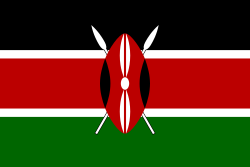British colonialism and independence
During the 20th century, the Iteso people underwent drastic changes in their lifestyles, transitioning from a pastoral lifestyle to prolific farmers. [8] Many Iteso men travelled abroad to work in overseas British territories, such as Burma. In 1902, part of eastern Uganda was transferred to western Kenya, splitting the Iteso; despite this division, there's little cultural difference between the two. [9] However, the two's economic and social paths have diverged greatly. At independence, Ugandan Iteso were wealthier, as they did not suffer from the economic marginalization Kenyan Africans did due to white settlers. However, the Kenyan Iteso did not suffer the same degree of political instability their Ugandan cousins have, and Kenya's more developed economic infrastructure allowed for Kenyan Iteso to overtake Ugandan Iteso in wealth.
During Milton Obote's first period of rule, many Iteso received army and administration posts, allowing them to gain relative prosperity, which they invested back into cattle herds. [10] After Idi Amin was overthrown in 1979, the Karamojong acquired large amounts of arms, which they used to raid cattle from largely unarmed Iteso civilians; Iteso cattle herds were decimated, and many fell into poverty. During Obote's second period of rule, the Ugandan army was composed largely of the Iteso and Acholi. When Yoweri Museveni came to power, he disbanded a military unit meant to stop the Karamojong's cattle rustling and dismissed many Iteso, Acholi, and Kumam soldiers from the army for their previous service under Obote. [10] These disgruntled soldiers, upon returning to their economically deprived homelands due to violent cattle raids, took up arms against the Museveni regime. The Teso insurgency lasted into the late 1980s, keeping the region undeveloped. [11] [10]
In 1992, the conflict was brought to an end through the combined effort of the local initiatives, indigenous mediators, churches, and the Presidential Commission for Teso (PCT). This led to the creation of a war memorial near the Iteso capital Soroti, and the installation of an Iteso king, Emorimor Papa Paphrus Imodot Edimu. While successful in ending the violence and mollifying Teso opposition to Museveni, the Teso sub-region remains one of the poorest regions in Uganda, and the Iteso feel politically and economically neglected, widely distrusting the Museveni administration. [10]


